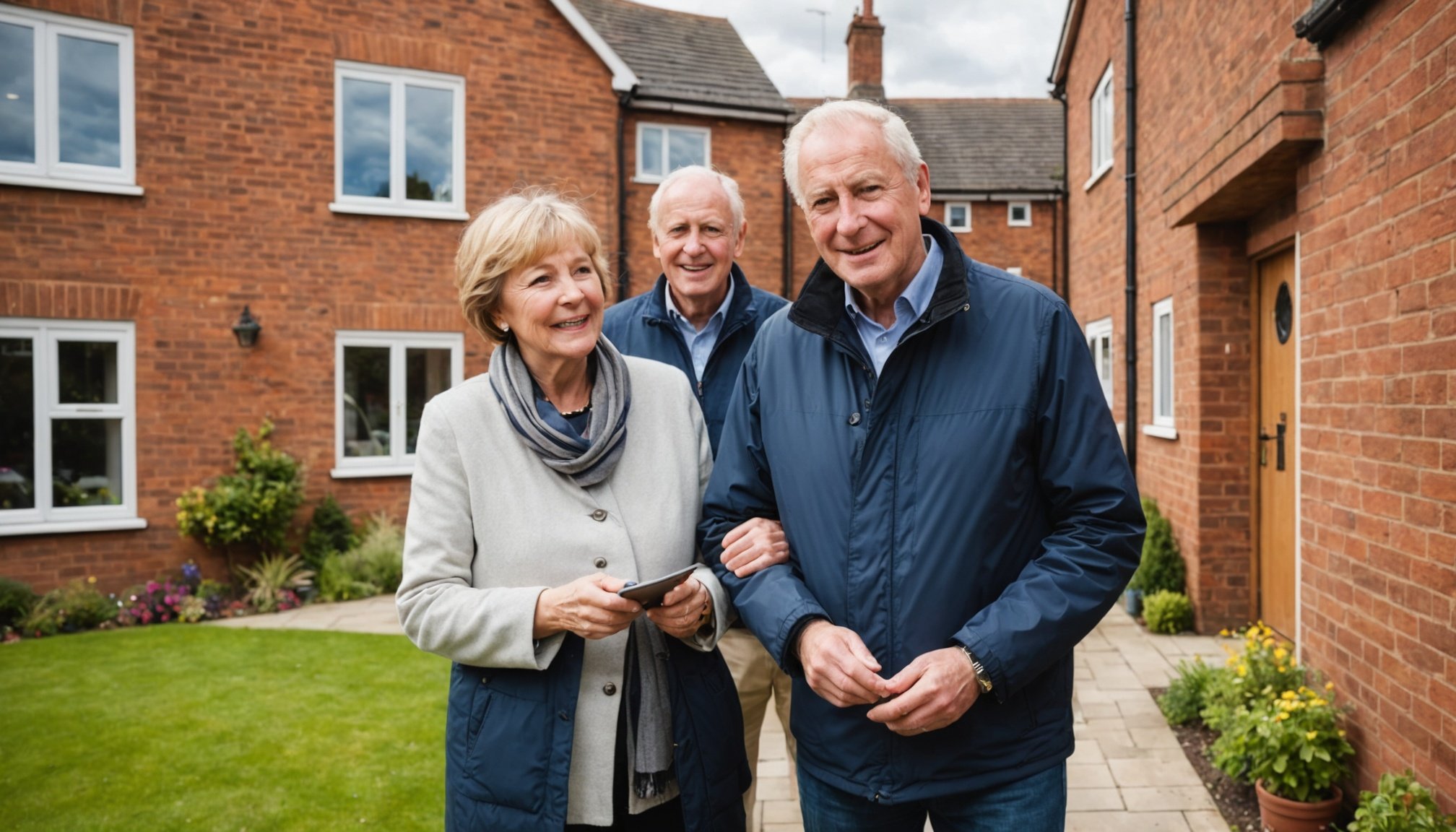Overview of Multi-Generational Living
The rise of multi-generational living has become a significant trend in the UK housing market. This living arrangement involves three or more generations residing in one household, providing numerous benefits not only for families but also for landlords.
For families, multi-generational living offers emotional support, deeper familial relationships, and cost-sharing benefits, making this an appealing choice against current economic challenges. Increased childcare opportunities and shared responsibilities lighten individual loads, enhancing the quality of life across all ages.
Also to read : Eco-friendly upgrades made easy: funding your london home”s green retrofit revolution
In terms of the housing market, UK trends show a growing need for more flexible housing solutions, influenced by economic constraints and societal changes. As a result, the trend redefines the role of landlords in creating accommodations that cater to these evolving needs. Landlords can find financial incentives in accommodating multi-generational homes, including reduced vacancy rates and long-term tenancies.
Furthermore, understanding these trends helps landlords adapt property layouts to serve multi-generational living benefits, creating appealing spaces that meet diverse tenant needs. By embracing this model, housing providers can stay ahead in a shifting market, thereby fulfilling both practical and emotional aspects essential for thriving multi-generational households.
Structural Modifications for Multi-Generational Homes
Designing multi-generational homes requires thoughtful planning focused on accommodating diverse needs. When considering home renovations, assessing structural needs becomes vital. Homeowners must evaluate existing structures for safety and adaptability. Professional assessments ensure all aspects, from foundational integrity to potential for modifications, meet specific requirements.
Assessing Structural Needs
Understanding the current layout’s limitations helps identify areas requiring change. This initial step frames the renovation direction effectively.
Key Renovation Projects
Common projects include extending living spaces or converting garages for additional bedrooms or lounges. These changes support the creation of multi-functional spaces. Extending kitchens or adding bathrooms also enhance utility and convenience, fostering better living environments for all household members.
Importance of Professional Assessments
Collaborating with architects and builders ensures property modifications align with both structural feasibilities and family needs. Professionals aid in crafting sound designs that seamlessly integrate desired functions without compromising safety.
For landlords or homeowners, these renovations not only increase property value but also make homes attractive to multi-generational families. Emphasising multi-functional spaces and thoughtful design assures each generation has space to thrive, balancing privacy with shared living experience.
Interior Design Ideas for Multi-Generational Living
Interior design for multi-generational living must balance functional spaces with aesthetic adaptability. Designing both communal and private spaces is key to fostering harmony among household members. A shared kitchen, for example, should be spacious enough for multiple users while incorporating elements that allow easy accessibility for all ages.
Multifunctional furniture solutions are essential to maximise utility. Consider modular furniture that caters to different activities or personal preferences. Such solutions can easily transform a living room into a guest bedroom, promoting flexibility without sacrificing comfort or style.
Incorporating accessibility features ensures that every family member has freedom of movement and independence. Installing handles in bathrooms, ramps instead of stairs, and adjustable countertops are ways to achieve inclusivity throughout the home. It creates an environment welcoming to both younger and older generations, endorsing a universally friendly atmosphere.
In summary, essential interior design elements like multifunctional furniture, adaptable communal areas, and accessibility features are critical for thriving multi-generational households. By tailoring functional and aesthetic needs, homeowners and landlords can create surroundings conducive to collaborative family dynamics while respecting individual privacy and comfort.
Understanding Zoning Laws and Regulations
Navigating zoning regulations is crucial for landlords interested in aligning their properties with UK demands for multi-generational living. These laws dictate what property modifications are permissible, shaping how landlords can adapt their buildings for diverse family setups.
Landlord responsibilities extend to ensuring compliance with these regulations, which may involve obtaining specific permits and accommodations before embarking on home renovations. Understanding the conditions—from zoning restrictions to building codes—is fundamental for maintaining legal operations.
Applications for permits can be intricate, necessitating a well-documented process to avoid delays. It’s important for landlords to familiarize themselves with both local and national zoning laws, as these can differ greatly across regions.
Moreover, ensuring compliance with safety regulations is an indispensable part of the process. These might include fire safety measures and accessibility requirements that need to be integrated into renovation plans.
Adherence not only safeguards the landlord from potential legal repercussions but also ensures that the living environment remains secure for all residents. Understanding these complexities is essential for landlords to offer viable and legal housing solutions in the multi-generational market.
Drafting Tenant Agreements for Multi-Generational Homes
Creating tenant agreements for multi-generational homes requires special attention to the dynamics involved. These agreements should focus on clarity, specifying lease terms that accommodate the unique nature of shared living spaces.
Essential Elements of Tenant Agreements
Understanding the essential components of tenant agreements is crucial. Agreements should delineate the use of communal areas, ensuring each family understands their role and responsibilities. Clear guidelines promote harmonious living and prevent misunderstandings.
Addressing Shared Spaces and Responsibilities
Given the shared living environment, it’s vital to address the use of common spaces such as kitchens and gardens. Define cleaning schedules and maintenance responsibilities within the tenant agreements. Everyone should know exactly what their duties entail, fostering a sense of community and collaboration.
Navigating Conflicts Among Tenants
Conflicts can arise in any multi-generational home, especially regarding autonomy and privacy. Establish a mediation clause in agreements, outlining steps to resolve disputes amicably. Encourage open communication and provide points of contact, empowering tenants to handle disagreements effectively.
These thoughtful measures not only protect the landlord’s interests but also enhance the landlord-tenant relationship, creating a secure environment that supports the multi-generational living arrangement.
Overview of Multi-Generational Living
The UK housing market has seen a significant rise in multi-generational living, a trend that involves three or more generations living under one roof. This arrangement offers numerous benefits for both families and landlords, reflecting the shifts in UK housing trends influenced by economic and societal changes.
For families, multi-generational living benefits include enhanced emotional support and the opportunity to form deeper familial bonds. It also offers financial relief through cost-sharing, making this lifestyle appealing amid economic constraints. Childcare and shared responsibilities further bolster quality of life, presenting a harmonious domestic environment.
From a landlord’s perspective, adapting to these UK housing trends can result in financial incentives. By embracing multi-generational living, landlords can experience reduced vacancy rates and enjoy longer tenancies. This demands a redefinition of their roles, urging them to create spaces that cater to diverse family needs.
In summary, by aligning their properties with these evolving needs, landlords not only benefit financially but also contribute to creating nurturing environments for multi-generational households. Understanding and leveraging these multi-generational living benefits places landlords in a strong position to thrive in the current housing market landscape.
Financial Considerations for Overhauling Properties
When planning property modifications for multigenerational homes, thorough financial consideration is essential. Budgeting for both renovations and ongoing costs can be daunting. It’s wise for homeowners and landlords to start with a detailed budget outlining each project’s anticipated expenses, from design to construction.
To meet these financial demands, exploring diverse financing options becomes crucial. Options like home improvement loans or grants can provide necessary funds, enabling property owners to invest in necessary home renovations. Engaging with financial advisors may also reveal opportunities to maximise available resources efficiently.
Evaluating the potential return on investment is another crucial step. For landlords, multi-functional spaces not only increase property value but also attract long-term tenants, enhancing overall revenue potential. Assessing the market for rental demand in multi-generational living can offer insights into future profitability.
In summary, addressing costs, exploring financing options, and understanding the potential returns can enable property owners to successfully navigate the financial landscape of modifying properties for multi-generational living. These steps align economic strategy with the trending needs of the UK housing market, setting the stage for successful property enhancements.
Benefits and Challenges of Multi-Generational Living
Multi-generational living presents a unique set of benefits and challenges that extend beyond just sharing living spaces. Families embracing this lifestyle often experience stronger emotional connections and social support, as different generations can come together to offer guidance and learning opportunities. This arrangement fosters a sense of unity and mutual respect as familial bonds deepen.
Despite the emotional advantages, living arrangements in multi-generational homes can also introduce complexities. The blending of different lifestyles, routines, and expectations might lead to conflicts, particularly in areas where privacy and autonomy are valued. Balancing such diverse needs requires adaptability and open communication to ensure harmonious cohabitation.
There are notable case studies illustrating how families have successfully navigated these challenges. For example, designing homes with separate entrances or multi-functional spaces enables families to maintain their independence while enjoying communal benefits. Implementing well-thought-out scheduling and responsibility-sharing helps families manage household duties smoothly, reducing potential tensions.
By examining these multi-generational arrangements, families can learn from successful strategies that others have adopted, paving the way for adaptive living arrangements that support both individual and collective well-being.
Resource Links and Detailed Checklists
Navigating the world of multi-generational living requires resources tailored to the unique aspects of adapting properties. For landlords, having access to a comprehensive resource guide is essential. Here, one can find direct answers to questions about zoning regulations and tenant agreements. Utilizing a detailed checklist ensures landlords stay abreast of necessary steps for property modifications.
Checklists offer invaluable guidance through each stage of preparing homes for multi-generational families:
-
Renovations: Outline specific changes needed, such as creating multi-functional spaces or improving accessibility. Include necessary home renovations based on professional evaluations.
-
Regulatory Compliance: Document important zoning regulations. Specify needed permits and proactively address legal considerations, ensuring a seamless approval process.
Landlord Tips provide practical insights to enhance the living experience of tenants:
- Establish clear communication channels for resolving disputes.
- Cultivate an environment of cooperation through tenant agreements that underscore shared responsibilities.
- Pay attention to evolving UK housing trends to align offerings with market demands.
By utilizing these strategic resources, landlords can efficiently manage the intricacies of multi-generational living while enhancing tenant satisfaction and maintaining profitable operations.






